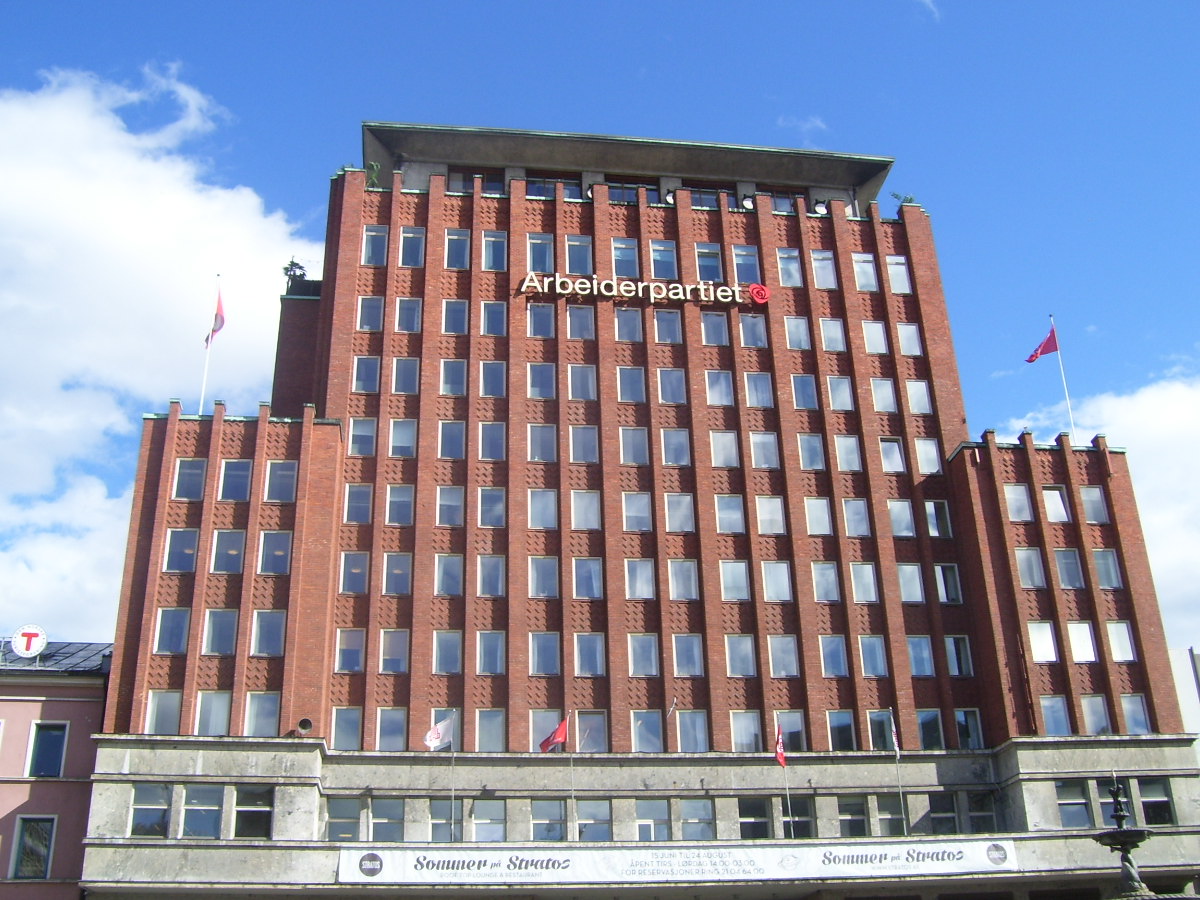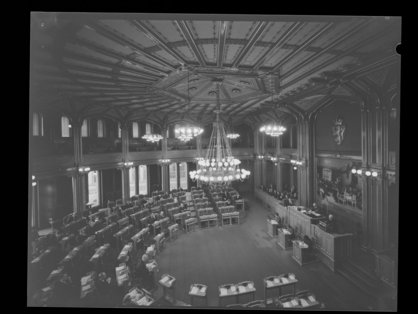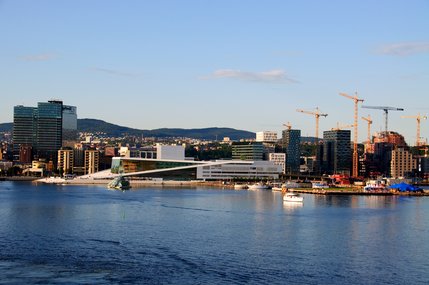The Golden Age of social democracy in Norway
The Norwegian Labour Party (Arbeiderpartiet) was in power when the country was transformed into a wealthy society with modern welfare in the decade following the Second World War. However, the other parties supported major parts of the social democratic project as well. Reform-driven policy, planned modernisation and rapid economic growth were key issues for the Labour government and ensured strong, stable and continuous support for the party in the post-war years. In line with developments in the rest of north western Europe, the social democratic project aimed to combine economic planning and governance with political freedom and personal initiative.

Cross-party cooperation
During the period from the mid-1930s until the late-1960s, the Norwegian Labour Party consistently received more than 40% of the vote in all general elections. From 1945 onwards, the party enjoyed a majority of seats in parliament for 16 years while also governing the country without interruption until 1965, apart from a three-week period in 1963.
It would nevertheless be misleading to label Norway a ‘one-party state’ during this time, as the historian Jens A. Seip contentiously did in 1963. His colleague Tore Grønlies’ characterisation of a state permeated by cooperation and negotiation is probably more accurate. The government based its work on a shared programme for all the political parties. “In my opinion we should be willing to cooperate”, Prime Minister Einar Gerhardsen told his party in 1950, before stating that they also had to show who was really in control.
Practical and rational solutions
Both in terms of social reforms, economic governance and industrial modernisation, the Labour Party was the driving force. The party’s long-term vision aimed at establishing a socialist society, but people had very different notions of the meaning of that term. A revision of the party programme in 1949 made the Norwegian Labour Party one of the least dogmatic among the European social democratic parties.
Designing policy and developing concrete solutions had to be a practical question of how to obtain the desired results; economic governance should be based on sound and rational considerations. The process of changes to society required involvement and support from the affected parties. In this way, socialism in fact became the policy of continuous reforms.
New economic insights and new tools to govern the economy constituted an important part of the foundation for reform-driven policy. Economic theory associated with names such as J. M. Keynes in the UK and Ragner Frisch in Norway meant that a crisis-free welfare society appeared to be a realistic possibility.

PICTURE: The Norwegian parliament in 1967. Photo: Jac Brun. The Norway National Library (Nasjonalbiblioteket). Public Domain.
Democratic planning and the Norwegian Labour Party
A rapid recovery after the war required planning and control. Even liberal proponents of the free market were convinced that efficient recovery could not be left to the dynamics of the free market – intervention was also required.
The Labour Party, in addition, perceived state-driven economic planning as the gateway to continued growth and modernisation. At the same time, leading social democrats saw this kind of intervention as a precondition for democracy, as it ensured a necessary level of equality and stability.
 Suffering and poverty had led to destructive totalitarian movements on both sides of the political spectrum after the First World War. Now, evenly distributed and planned wealth could create a safe and progressive society. The Minister of Finance, Erik Brofoss, who was the architect behind the economic policy, argued that macro-economic planning represented “a step towards increased freedom”.
Suffering and poverty had led to destructive totalitarian movements on both sides of the political spectrum after the First World War. Now, evenly distributed and planned wealth could create a safe and progressive society. The Minister of Finance, Erik Brofoss, who was the architect behind the economic policy, argued that macro-economic planning represented “a step towards increased freedom”.
PICTURE: Erik Brofoss, the Norwegian Minister of Finance from 1945-47 was one of the architects behind social democratic planning. Photo: Kulturmuseet, (CC BY-NC-SA).
Freedom and regulation
The relationship between freedom and regulation was hardly that straightforward, however. A properly balanced interventionism only materialised after years of trying and failing. Many initiatives were met with harsh resistance from the bourgeois side as well as business interest organisations. Attempts to set up permanent bodies for regulation and transformation in business had to be adapted to the economic and political reality of the day.
A fierce dispute over a law on prices and rationalisation in the early 1950s (pris- og rasjonaliseringsloven) illustrated the complexities of direct state intervention in an open society. Leading forces within the Labour Party learned that indirect measures were better suited to steer the economy in the desired direction, particularly in a situation where the party enjoyed a political majority.
At the same time, the liberalisation of foreign trade opened up more opportunities for modernising economic life through increased competition. The social democratic solution became one of combining an extensive market economy with an active state that took responsibility for consumer welfare through overall intervention and governance. And interest organisations in business and work life found their place in an economy where negotiation between different parties on an equal footing was the norm.
Broad support
Rapid and evenly distributed economic growth in the period up to 1970 provided the basis for a level of increased prosperity that was without any previous parallels for most Norwegians. At the same time, the Labour Party strengthened the development of universal social security and pension schemes, and a strong public health and education system with broad support from the other political parties.
Support for the centre-oriented model developed by the Norwegian social democrats was clear and long-standing. When the bourgeois parties entered government in 1965, they largely continued the fabric of the model. Therefore, the golden age of social democracy can be said to extend at least into the early 1970s.

Central Oslo today, a highly modernised metropolis of Europe. Photo: Gry Thunes. Colourbox.
Further reading:
- Mary Hilson, The Nordic Model. Scandinavia since 1945 (London: Reaktion Books, 2008).
- Tore Grønlie, 'The years since 1945' in Danielsen et al. Norway: A History from the Vikings to Our Own Times (Oslo: Scandinavian University Press, 1995).
Links:
- The Norwegian Labour Party website
- Thanks go to norgeshistorie.no for allowing us to translate this article. The original article can be read in Norwegian here.
